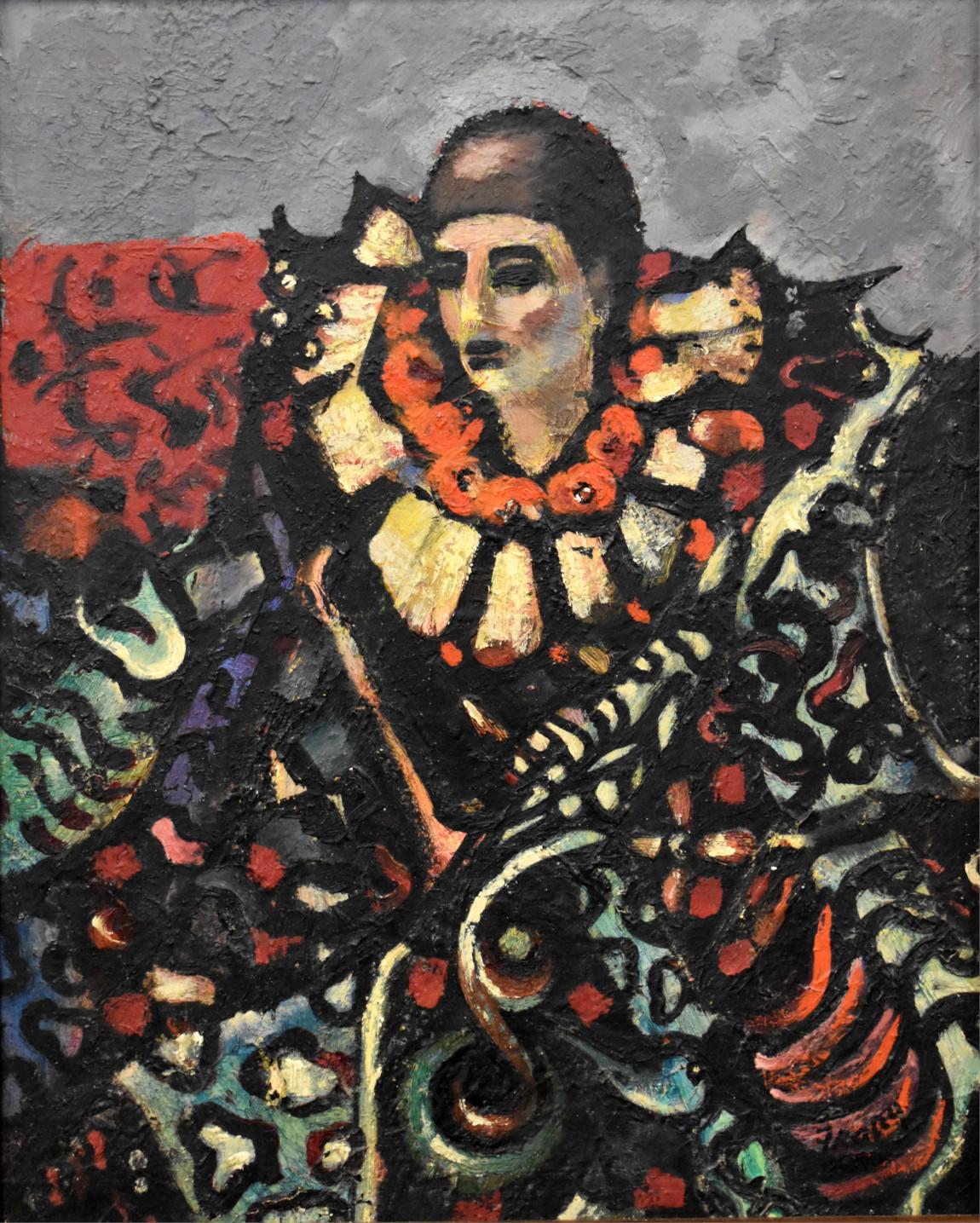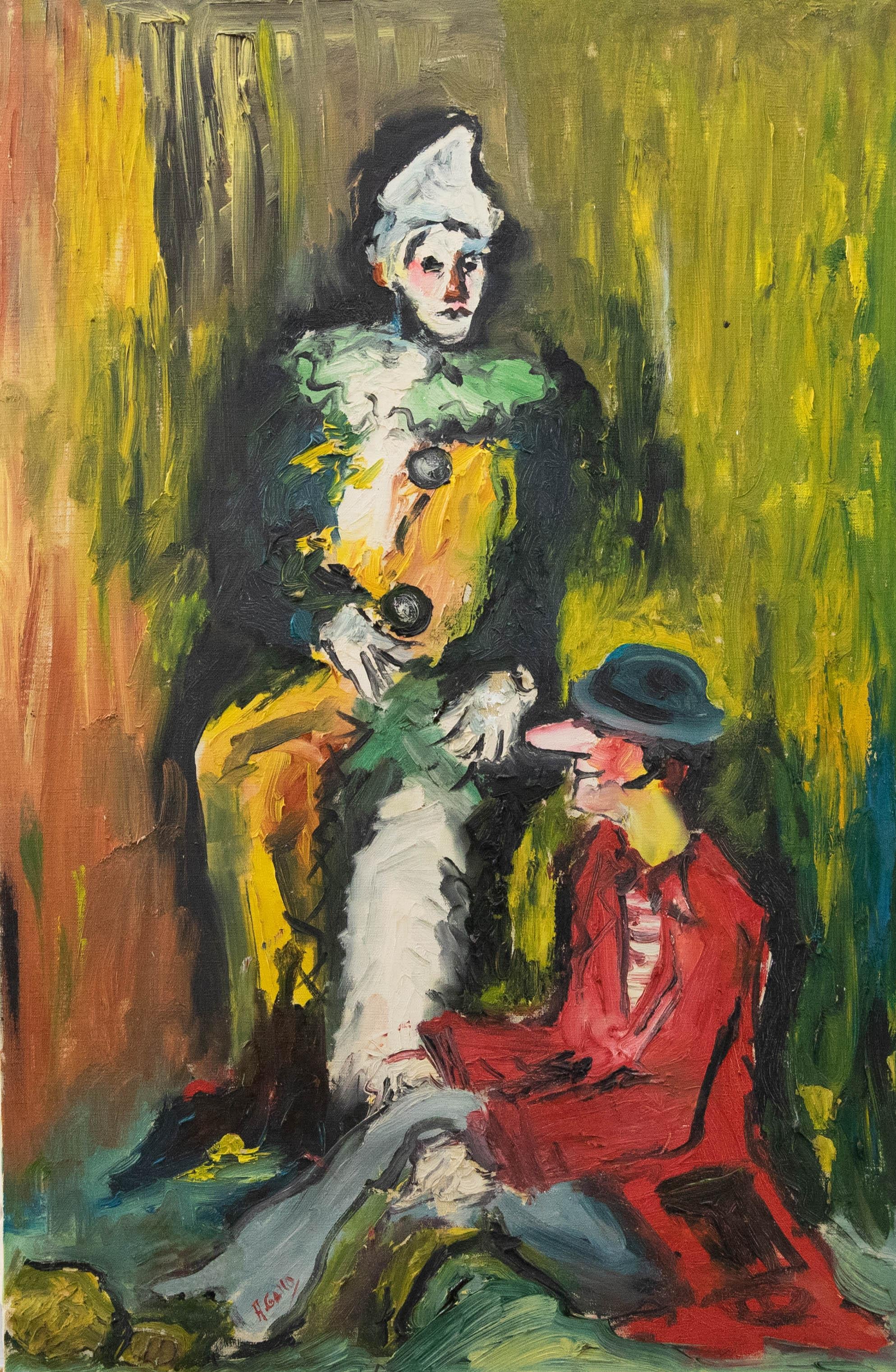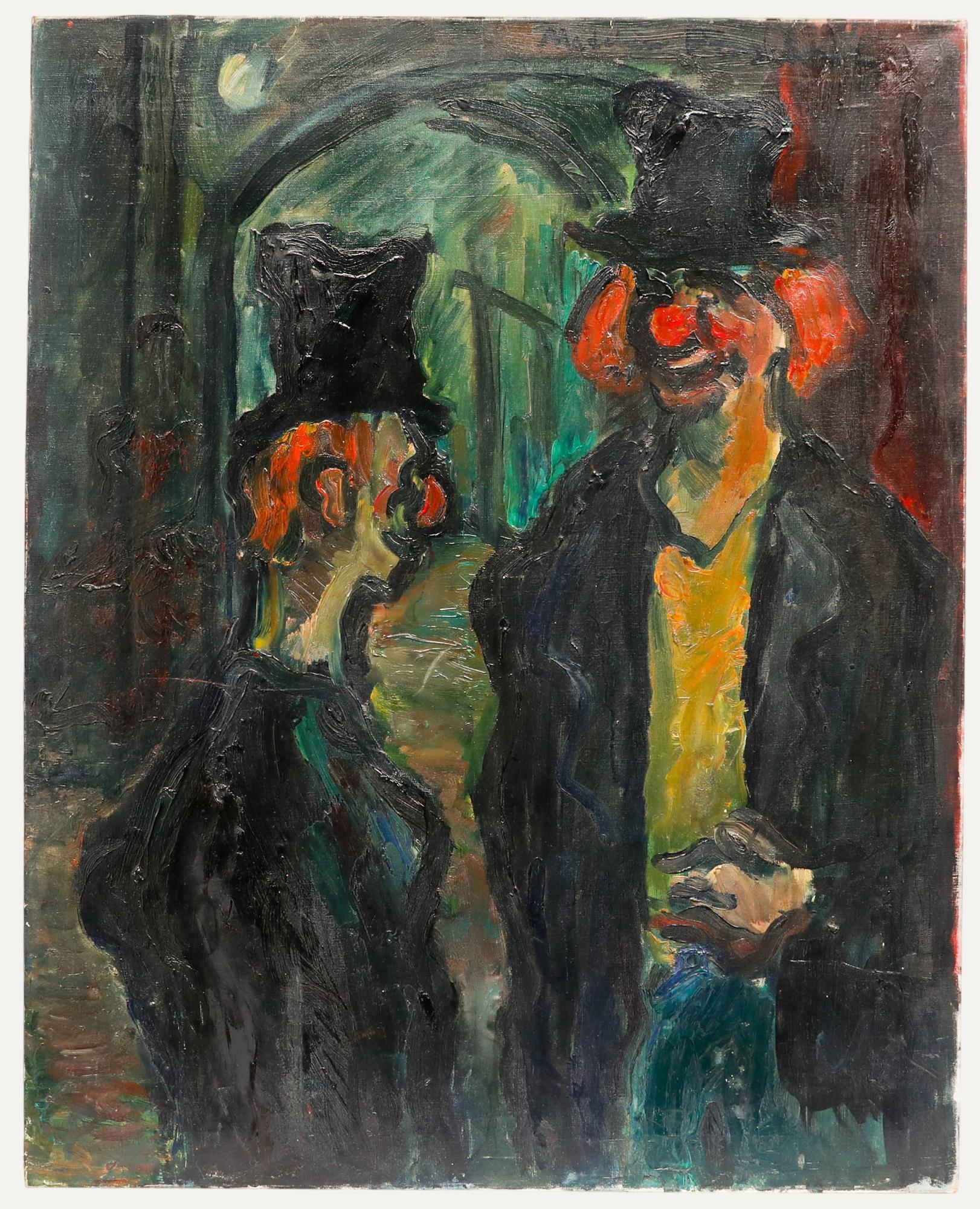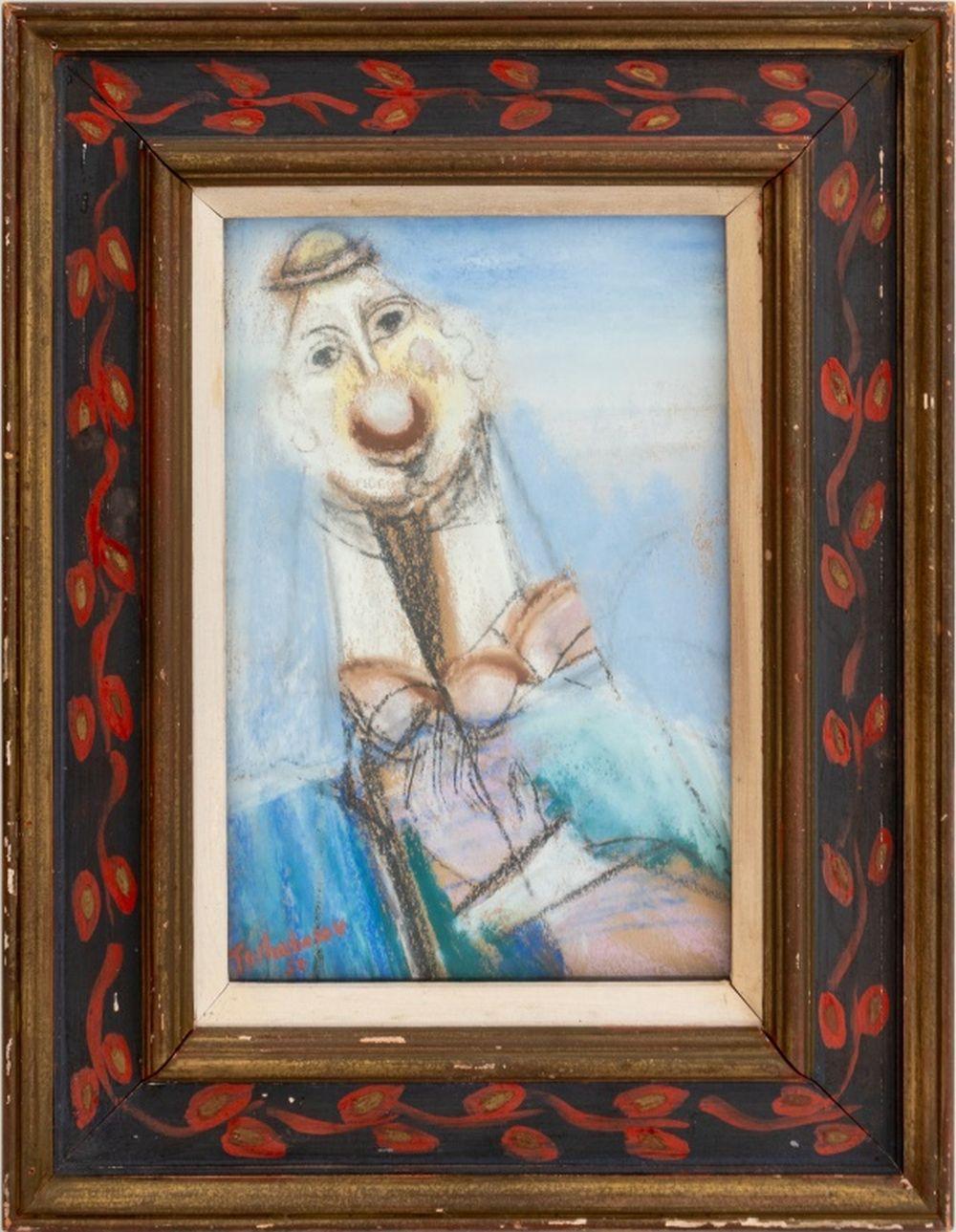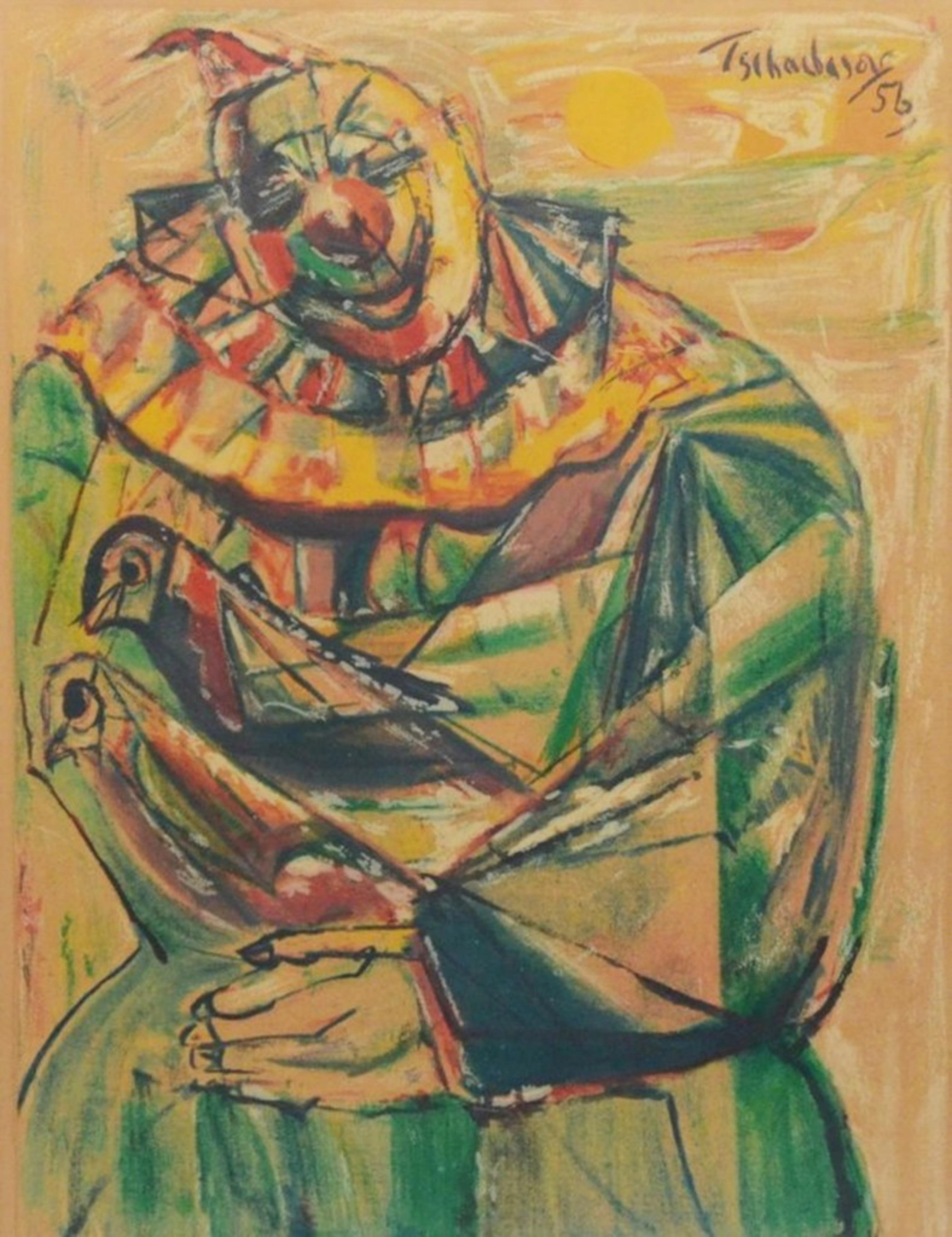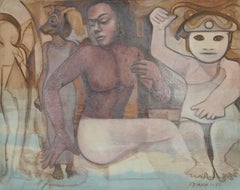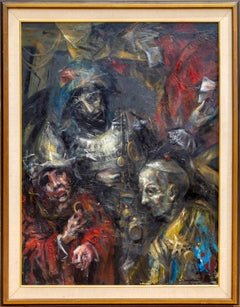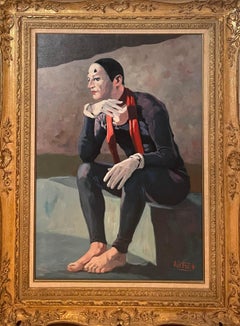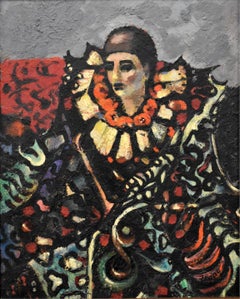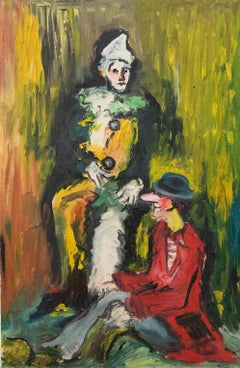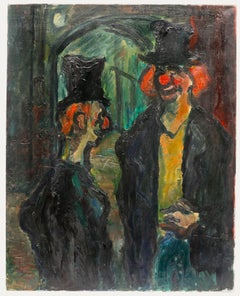Items Similar to Clown and Nude
Want more images or videos?
Request additional images or videos from the seller
1 of 8
Marshall GoodmanClown and Nude1960
1960
$16,000
£12,123.03
€13,910.22
CA$22,514.58
A$24,749.72
CHF 13,007.32
MX$300,551.75
NOK 162,263.02
SEK 153,732.80
DKK 103,815.50
About the Item
Artist: Marshall Goodman, American (1916 - 2003)
Title: Clown and Nude
Year: 1960
Medium: Oil on Board, signed and dated
Size: 25 x 30 in. (63.5 x 76.2 cm)
Frame Size: 28.5 x 34 inches
- Creator:Marshall Goodman (1916 - 2003)
- Creation Year:1960
- Dimensions:Height: 28.5 in (72.39 cm)Width: 34 in (86.36 cm)
- Medium:
- Movement & Style:
- Period:
- Condition:
- Gallery Location:Long Island City, NY
- Reference Number:1stDibs: LU4663674092
About the Seller
4.9
Platinum Seller
Premium sellers with a 4.7+ rating and 24-hour response times
Established in 1979
1stDibs seller since 2014
3,112 sales on 1stDibs
Typical response time: 1 hour
- ShippingRetrieving quote...Shipping from: Long Island City, NY
- Return Policy
Authenticity Guarantee
In the unlikely event there’s an issue with an item’s authenticity, contact us within 1 year for a full refund. DetailsMoney-Back Guarantee
If your item is not as described, is damaged in transit, or does not arrive, contact us within 7 days for a full refund. Details24-Hour Cancellation
You have a 24-hour grace period in which to reconsider your purchase, with no questions asked.Vetted Professional Sellers
Our world-class sellers must adhere to strict standards for service and quality, maintaining the integrity of our listings.Price-Match Guarantee
If you find that a seller listed the same item for a lower price elsewhere, we’ll match it.Trusted Global Delivery
Our best-in-class carrier network provides specialized shipping options worldwide, including custom delivery.More From This Seller
View AllClownesse, Surrealist Oil Painting by Philippe Alfieri
By Philippe Alfieri
Located in Long Island City, NY
Artist: Philippe Alfieri, Italian/American (1921 - 2009)
Title: Clownesse
Year: circa 1970
Medium: Oil on Canvas, signed l.l.
Size: 30 x 24 in. (76.2 x 60.96 cm)
Frame Size: 38 x 32 ...
Category
1970s Modern Figurative Paintings
Materials
Oil
Nude Goddess, Signed Oil on Board Painting by John F. Leonard
Located in Long Island City, NY
Nude Goddess (68)
John F. Leonard
American (1921–1987)
Date: 1971
Oil on Board, dated l.r.
Size: 22 in. x 28 in. (55.88 cm x 71.12 cm)
Category
1970s American Modern Figurative Paintings
Materials
Oil, Board
Clown Group, Framed Surrealist Oil Painting by Jonah Kinigstein
By Jonah Kinigstein
Located in Long Island City, NY
Jonah Kinigstein is an artist living in Brooklyn. He works in the scorched earth tradition of such 18th- and 19th-century cartoonists as James Gillray, George Cruikshank, and Joseph Keppler, and embraces their somewhat rococo pen and ink technique as well as their penchant to exaggerate the grotesque. In the 1990s, he used to paste...
Category
1960s Impressionist Figurative Paintings
Materials
Oil
Seated Clown, Modern Art Oil Painting by Philippe Alfieri
By Philippe Alfieri
Located in Long Island City, NY
Artist: Philippe Alfieri, Italian/American (1921 - 2009)
Title: Seated Clown
Year: 1988
Medium: Oil on Canvas, signed l.l.
Size: 36 x 24 in. (91.44 x 60.96 cm)
Frame Size: 46 x 34 in...
Category
1980s Modern Figurative Paintings
Materials
Oil
Mal Muchacho (Bad Boy)
By Armando Villagran
Located in Long Island City, NY
Artist: Armando Villagran, Mexican (1945 -1995)
Title: Mal Muchacho (Bad Boy)
Year: 1987
Medium: Oil on Canvas, signed l.l.
Size: 47 x 39 inches [119.38 x 99.06 cm]
Frame: 49 x 41 in...
Category
1980s Surrealist Figurative Paintings
Materials
Oil
Clown With Flower, Enamel Painting on Copper by Max Karp
By Max Karp
Located in Long Island City, NY
Artist: Max Karp
Title: Clown with Flower
Medium: Enamel on copper, signed lower right
Image Size: 29.5 x 23 inches
Frame Size: 40 x 34 inches
Category
Late 20th Century American Impressionist Figurative Paintings
Materials
Copper, Enamel
You May Also Like
"THE CLOWN" MICHAEL FRARY MID CENTURY MODERN TEXAS ARTIST
By Michael Frary
Located in San Antonio, TX
Michael Frary
(1918 - 2005)
Austin Artist
Image Size: 16 x 12.5
Medium: Oil
"The Clown"
Biography
Michael Frary (1918 - 2005)
Michael Frary was born in Santa Monica, California on Ma...
Category
1960s American Modern Figurative Paintings
Materials
Oil
Oil painting of Clown
Located in Fredericksburg, VA
This is a painting done by the American artist L.A. McMillen. It is signed lower right and is in excellent condition for the period. This shows a clown scene with the face of a man i...
Category
Early 20th Century Surrealist Figurative Paintings
Materials
Canvas, Oil
H. Gallo - 20th Century Oil, Two Clowns
Located in Corsham, GB
A charismatic portrait study of two clowns in full costume. The artist captures the figures using expressive brushwork and a vibrant palette. Signed to the ...
Category
20th Century Figurative Paintings
Materials
Oil
$328 Sale Price
20% Off
Madeleine Flaschner (1933-2022) - Mid 20th Century Oil, Clowns
Located in Corsham, GB
An expressive mid-20th century study by the artist Madeleine Flaschner (1933-2022). Signed to the upper right. Further signed verso. On canvas on s...
Category
20th Century Figurative Paintings
Materials
Oil
Clown
By Nahum Tschacbasov
Located in Astoria, NY
Nahum Tschacbasov (Russian/American, 1899-1984), Clown, Pastel on Paper, 1950, signed and dated lower left, painted wood frame. Image: 11.5" H x 7.5" W; frame: 18" H x 14" W. Provena...
Category
1950s Expressionist Figurative Drawings and Watercolors
Materials
Paper, Pastel
Mid Century Modern Clown print, hand signed 144/250 Russian born American artist
By Nahum Tschacbasov
Located in New York, NY
Nahum Tschacbasov
Mid Century Modern Clown, 1956
Lithograph
Signed, dated and numbered 144/250 in graphite on the front
34 x 27.5 inches
Unframed, affixed to matting
Published by American Color Slide Co, Ltd., New York
Terrific uncommon vintage signed, numbered and dated mid Century modern lithograph from this interesting and distinctive -and undervalued Russian American artist. Highly collectible clown...
Category
Mid-20th Century Expressionist Abstract Prints
Materials
Lithograph, Pencil
